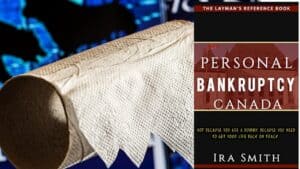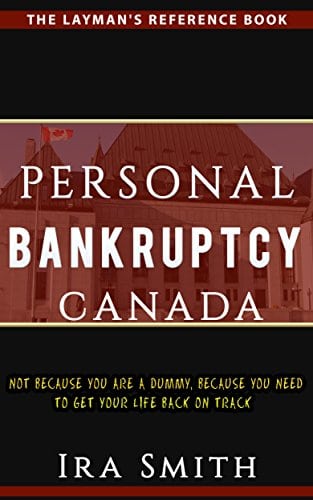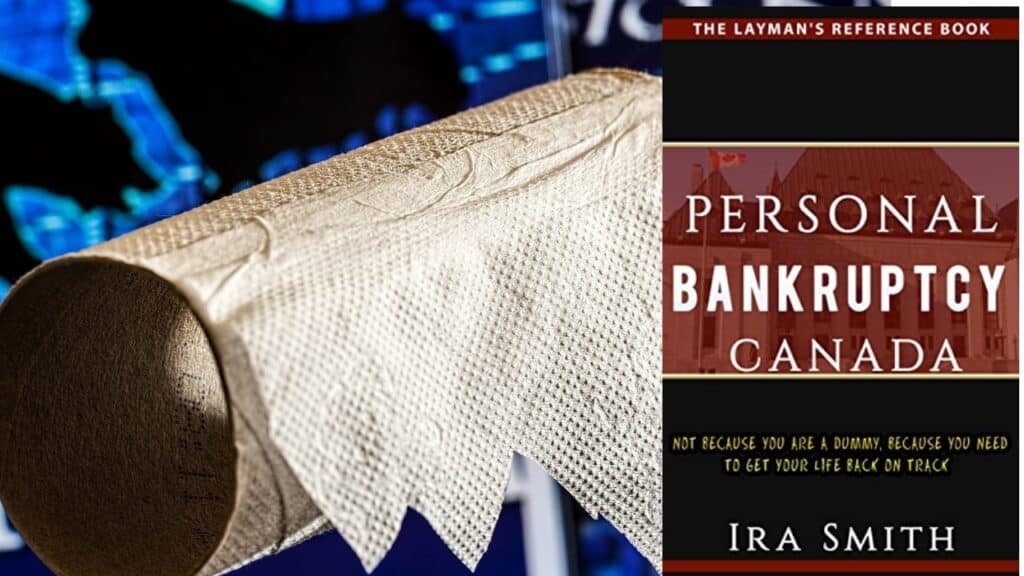We hope that you and your family are safe, healthy and secure during this COVID-19 pandemic. Ira Smith Trustee & Receiver Inc. is absolutely operational and Ira, in addition to Brandon Smith, is readily available for a telephone consultation or video meeting.
Bankruptcy protection: What happens if a company gets into financial trouble?
A Canadian company seeking bankruptcy protection has two choices when it is financially troubled and wants to reorganize. By hiring insolvency legal counsel and a licensed insolvency trustee to get both insolvency and bankruptcy law advice and financial advice, they can protect themselves from their creditors, either by:
- using the Companies’ Creditors Arrangement Act (CCAA) to file for bankruptcy protection; or
- working with an insolvency trustee and filing a Notice of Intention to Make a Proposal under the Bankruptcy and Insolvency Act (BIA) you can obtain bankruptcy protection.
In order to reorganize in Canada, an insolvent company files for bankruptcy protection. If you are insolvent in Canada, then you must file for bankruptcy protection, which is equivalent to Chapter 11 in the United States. The process is called financial restructuring or financial reorganization. By doing this, the company will try to restructure while it continues to operate to come up with a restructuring plan that allows the company to survive while satisfying the needs of the creditors to some degree.a
This Brandon Blog discusses a recent court decision that demonstrates that there is a risk to creditors who receive payments from the insolvent company under bankruptcy protection for goods or services supplied if the restructuring fails.
What happens to the company that files for bankruptcy protection?
An organization that files for bankruptcy protection, or as it is sometimes called, creditor protection, differs from an organization that files for bankruptcy. A pure bankruptcy procedure consists of a liquidation. The company ceases to operate unless the Trustee sees value in continuing to operate the company for a limited period of time.
The trustee in bankruptcy takes possession of all assets that are either not subject to valid claims by secured creditors (typically financial institutions) or that belong to third parties (for example, equipment under lease or goods undergoing repair that are in the company’s possession). A licensed insolvency trustee then formulates a plan for selling the unencumbered assets of the company to maximize the proceeds. Afterwards, the Trustee distributes the funds in accordance with the BIA.
In the case of a company filing for bankruptcy protection, this is one of the alternatives to bankruptcy. The intention is to continue operating while it tries to restructure. Most of the time, this entails downsizing. A plan will be devised to repay some of the remaining debt in exchange for the creditors writing off the balance that is owed. With success, the company can retain employees and continue to operate. Creditors will be able to earn money by supplying the reorganized company in the future.
The CCAA allows companies that owe at least $5 million to their creditors to file for bankruptcy protection. Either the business will be restructured and continue to exist on new financial terms or a wind-down will be supervised to pay back anyone owed money by selling assets. BIA restructuring provisions can be used by companies that owe less than $5 million.
In other words, a company that goes bankrupt will shut down. Those who file for bankruptcy protection want to keep operating. As disruptive as bankruptcy and restructuring are, they can be beneficial for businesses, individuals and the economy since they preserve value and prevent assets from being wasted.
As soon as the company enters bankruptcy protection (or bankruptcy), proceedings against it are stayed. As a result, all collection rights for creditors are suspended. A “time-out” gives the company a chance to restructure, or the Trustee can handle its duties in bankruptcy without interference from creditors. Additionally, it “freezes” all creditors at the time of the filing, so that one cannot gain an advantage over another.

A record number of companies have sought creditor protection under COVID-19 and more are on the way?
The list of large Canadian companies with outstanding debts looking for bankruptcy protection from creditors got to a decade high in May and June 2020. Numerous financial commentators believed there would be a full-blown financial crisis and that a lot more would certainly file as a result of COVID-19 caused the economic downturn. Despite this, the number of corporate insolvency filings appears to have stabilized and also slowed down in 2021. One main reason is the number of government programs supporting Canadian business. In the same way as the virus itself, COVID-19 has actually taken a hefty financial toll on companies with pre-existing conditions.
Some familiar Canadian corporations in the list of companies that filed in that time due to their financial situation were:
- Reitmans
- Frank & Oak
- Aldo
- DavidsTea
- Cirque Du Soleil
- Mendocino
- Bow River Energy
- FlightHub
- Christian charity, Gospel for Asia
- Cequence Energy
- Delphi Energy
- Sail
Twenty-two major Canadian companies sought creditor protection in May and June 2020, almost four times the usual rate. The list obviously does not include major U.S. names such as Chesapeake Energy, J Crew, Neiman Marcus, Brooks Brothers, Pier 1 and Boy Scouts of America.
The bankruptcy protection court case facts
I want to tell you about Schendel Mechanical Contracting Ltd (Re), 2021 ABQB 893. On November 9, 2021, the Honourable Mr. Justice Douglas R. Mah released his decision.
Schendel Mechanical Contracting Ltd. (Schendel) was one of three associated companies that at one time collectively formed a major construction concern in Alberta under the Schendel name. As a result of financial difficulties, it was an insolvent entity and it filed a Notice of Intention to Make A Proposal under the BIA on March 22, 2019. Schendel continued operations as part of its restructuring effort. On various Schendel projects, Schendel bought HVAC equipment from the supplier between April 2018 and May 2019.
Ultimately, Schendel’s debt restructuring plan failed. Schendel was deemed to have filed for bankruptcy when it failed to implement a successful BIA Proposal restructuring. Schendel went bankrupt immediately. Its secured creditor applied to the Court for the appointment of a Receiver, which was granted.
As a result of reviewing the company’s books and records, the Receiver found and disputed the legality of a $40,000 payment from Schendel, an insolvent company, to one of its suppliers. According to the Applicant Receiver, the payment was prohibited for a number of reasons and the funds should be returned. The recipient supplier asserted that the payment was both innocent and validly received and that it was entitled to retain it.
In this case, a cheque dated July 8, 2019, to make the payment. Due to an unknown reason, the supplier did not negotiate the cheque until 11:48 AM on July 19, 2019. Schendel was also deemed to have filed for bankruptcy and the Court made the Receivership Appointment Order all on the same day, July 19, 2019. The Court had, however, no evidence regarding the exact moment the receivership and bankruptcy decision was made on that same day.

The bankruptcy protection case: The Receiver’s position
It is noteworthy that the action to recover the $40,000 was brought by the Court-appointed Receiver and not the insolvency trustee of the bankruptcy estate. According to the Receiver, the funds should be returned on the following grounds:
- the automatic stay under section 69(1) of the BIA was in effect at the time of filing and throughout the extension of the proposal period, so the supplier was without recourse against Schendel;
- the Court-ordered stay contained in the Receivership Appointment Order of July 19, 2019, as well as the concurrent stay imposed by a deemed bankruptcy under the BIA, deprived the supplier of all collection remedies as of that date;
- as an alternative, the payment may be prohibited under the Fraudulent Preferences Act; or
- it may be in violation of the Statute of Elizabeth (see note below).
NOTE: The English Parliament passed this statute in 1571 with the purpose of prohibiting transfers that would defraud creditors or hinder their collection efforts. As a result of widespread fraudulent transactions designed to defraud creditors, the 13 Elizabeth Statute was passed. It is still in effect in Alberta today.
The bankruptcy protection case: The supplier’s position
The recipient supplier said that it received the payment both innocently and legally and that it is entitled to retain it. In addition, the recipient supplier said:
- besides some routine questions about payment, the supplier had not engaged in any activity to try to collect the debt;
- the relationship with Schendel was arm’s-length;
- both of the last two extension orders for the NOI define a process by which Schendel may pay, and the Receiver has fallen short to prove that the procedure was not followed when it comes to the subject payment; and
- for either the Fraudulent Preferences Act or the Statute of Elizabeth, the required intent cannot be shown.
Since the bankruptcy trustee was not involved in this case, nobody was claiming that the payment was a preference or transfer under value under the BIA.

The bankruptcy protection case: The Judge’s decision
The Court was not presented with evidence on whether the $40,000 payment in question was approved within the proposal extension process or whether it was not approved. There was evidence to support Schendel’s compliance with approved procedures. In the post-NOI period, the supplier was found to have provided goods to various Schendel projects worth $34,476.75.
There was evidence that the payment was not just a payment on account of a pre-filing debt without further transactions post-filing. According to the Judge, the stay would not apply to indebtedness arising from goods or services supplied to Schendel after the filing of the NOI. This is because such indebtedness would not be a claim that could be a proven claim in the bankruptcy.
The Judge further stated that it is the Receiver’s responsibility to prove that the payment violated the stay. Schendel and the supplier did continue to do business together after the NOI was filed, according to the evidence. During the hearing, the Judge said that he should not simply assume facts in the Receiver’s favour. Additionally, the evidence indicated that some of the $40,000 payment was applied to the post-NOI supply of goods. A total of $34,476.75 worth of product was supplied to Schendel after the NOI was filed.
As a result, the Judge rejected all of the Receiver’s arguments and dismissed his Application in its entirety. Consequently, the supplier kept the $40,000.
Bankruptcy protection: How to cash your insolvent customer’s cheque safely
Companies filing for bankruptcy protection, whether under the CCAA or BIA, are reorganizing to stay in business. Businesses require purchasing goods and services and paying for them. It’s possible that some pre-filing debts will be paid after the filing date even though the debts are frozen from a collection perspective.
The stay does not necessarily prohibit every post-NOI payment by an insolvent company to a creditor. Such payments are valid when they are necessary to enable the company to move forward with restructuring. For example, a creditor may require payment of all or a portion of its pre-filing debt in order to supply post-filing.
Parties can agree to repay past debts in order to secure future supplies. First and foremost, the BIA process aims to encourage a debtor to reorganize as a going concern. Both creditors and debtors benefit from the debtor’s continued operation during this critical time. The BIA’s stay provisions and preference provisions give debtors breathing room to reorganize their finances. Setting up legitimate agreements with key suppliers is an integral part of that process.
In the end, it is critical to determine whether the payment of past indebtedness is a valid condition of post-NOI supply, which is required for restructuring to proceed. In that case, the post-filing payment of the pre-filing amount will be valid. If not, the insolvency trustee can recover it from the supplier.
Creditors seeking to recover pre-filing debts must make the payment as a condition of a post-filing supply arrangement. Additionally, because all of this is playing out in real-time in higher-risk settings, a supplier is free to amend the pricing post-filing. Similarly, if the supplier can secure it, there is no reason for them to not try to go from an unsecured creditor to a secured creditor on the post-filing supply by taking security or requesting a letter of credit. This would all be done out of an abundance of caution because as stated above, unpaid post-filing debts are not a claim provable in the company’s bankruptcy if the restructuring is unsuccessful.

Bankruptcy protection summary
I hope you found this bankruptcy protection Brandon Blog post informative. Are you worried because you personally or as business owners are dealing with substantial debt challenges and you assume bankruptcy is your only option? If it is too much debt for any reason, call me. It is not your fault that you remain in this way. You have actually been only shown the old ways to try to deal with financial issues. These old ways do not work anymore.
The Ira Smith Team utilizes new modern-day ways to get you out of your debt difficulties while avoiding bankruptcy. We can get you the relief you need and so deserve.
The tension put upon you is big. We know your discomfort factors. We will check out your entire situation and design a new approach that is as unique as you and your problems; financial and emotional. We will take the weight off of your shoulders and blow away the dark cloud hanging over you. We will design a debt settlement strategy for you. We know that we can help you now.
We understand that people and businesses facing financial issues need a realistic lifeline. There is no “one solution fits all” method with the Ira Smith Team. Even though we are licensed insolvency trustees, we have found that not everyone has to file bankruptcy in Canada. The majority of our clients never do. We help many people and companies stay clear of bankruptcy.
That is why we can establish a new restructuring procedure for paying down debt that will be built just for you. It will be as one-of-a-kind as the economic issues and discomfort you are encountering. If any one of these seems familiar to you and you are serious about getting the solution you need, contact the Ira Smith Trustee & Receiver Inc. group today.
Call us now for a no-cost consultation. We will get you or your business back up driving to healthy and balanced trouble-free operations and get rid of the discomfort factors in your life, Starting Over, Starting Now.
We hope that you and your family are safe, healthy and secure during this COVID-19 pandemic. Ira Smith Trustee & Receiver Inc. is absolutely operational and Ira, in addition to Brandon Smith, is readily available for a telephone consultation or video meeting.




